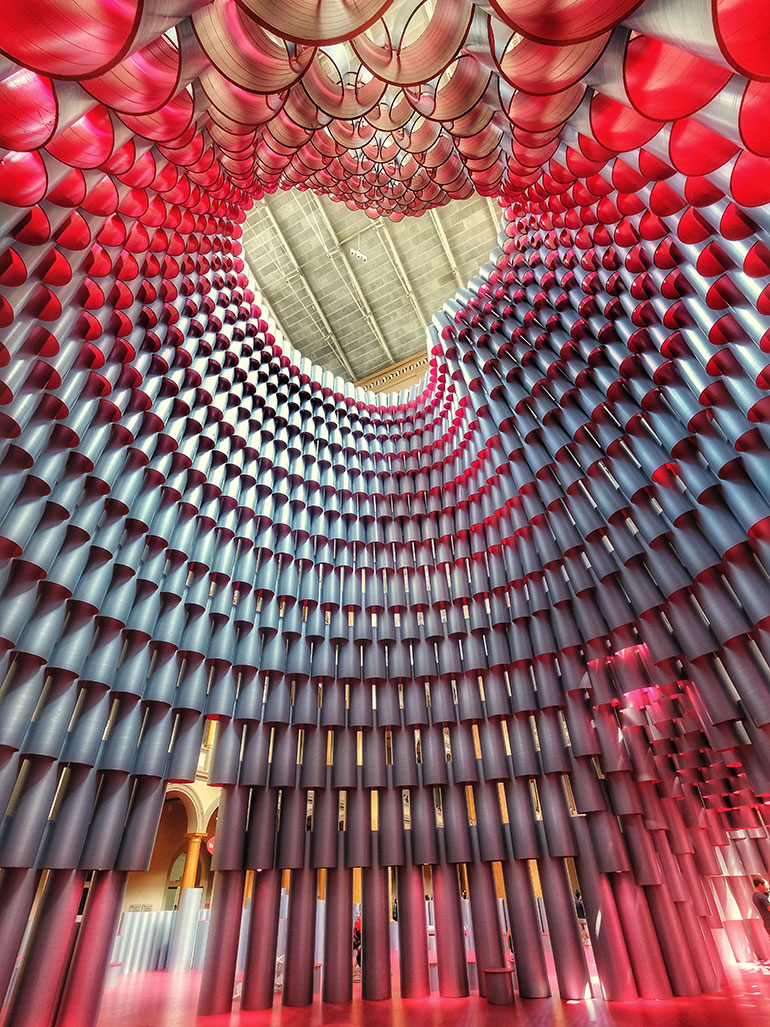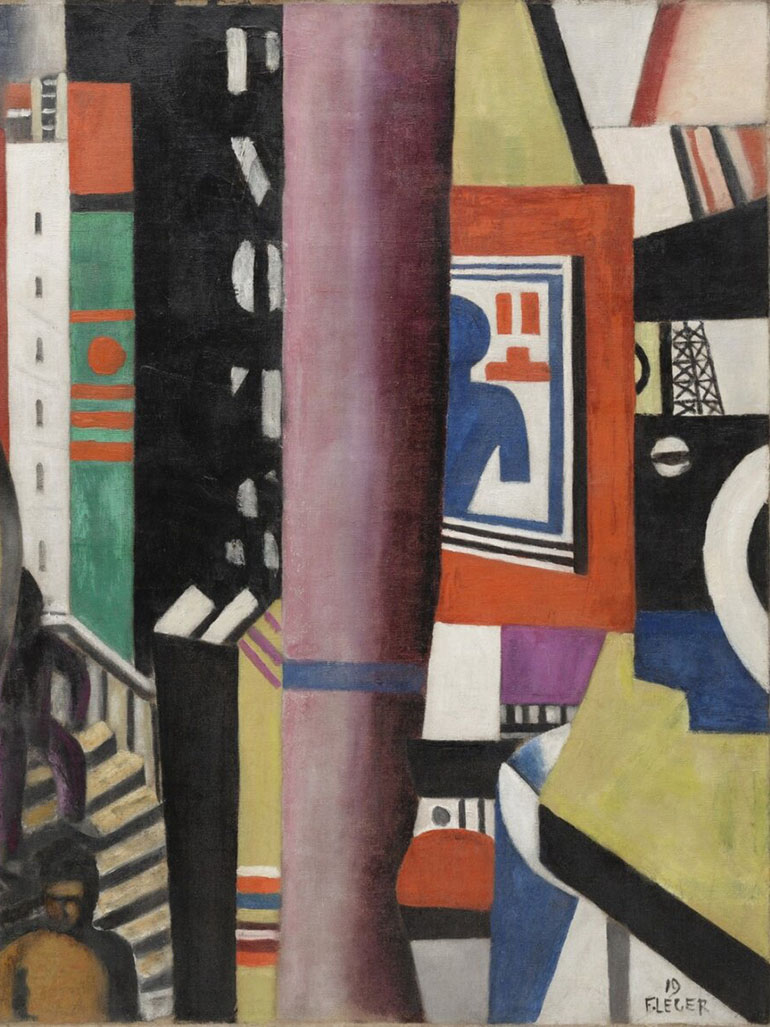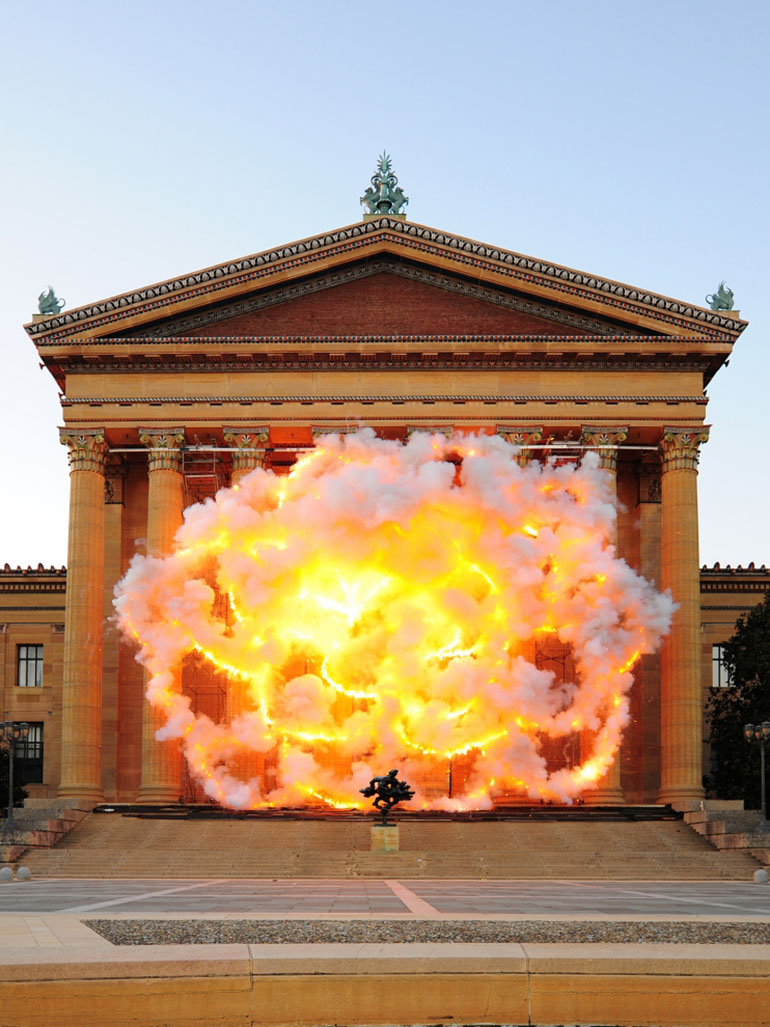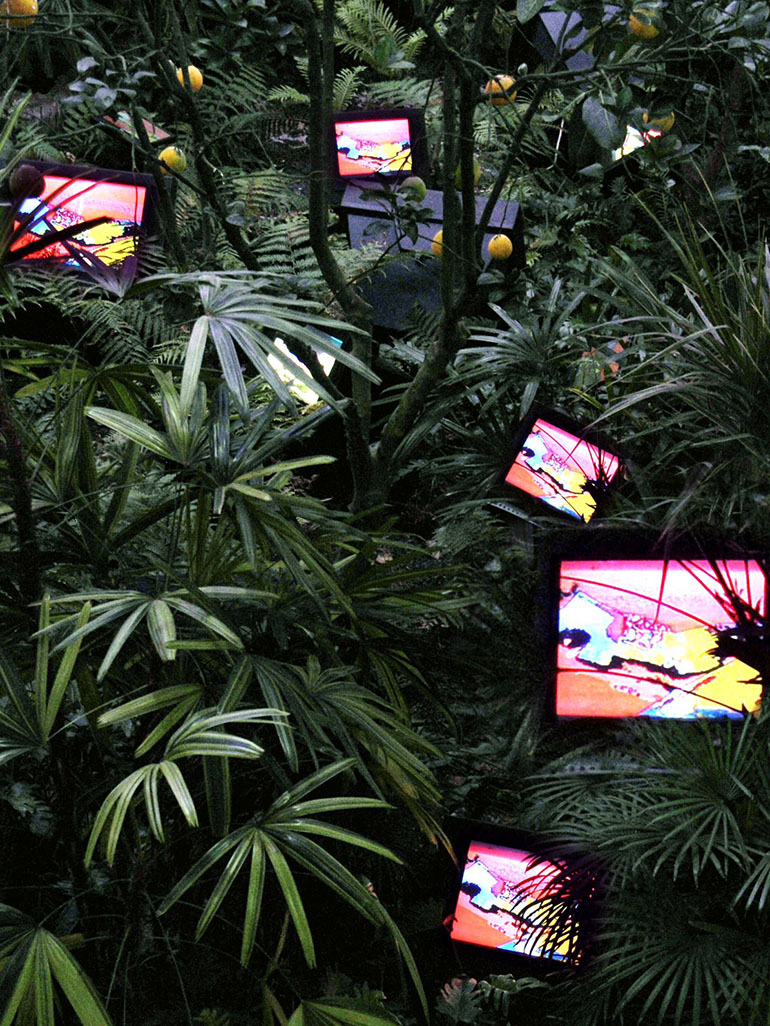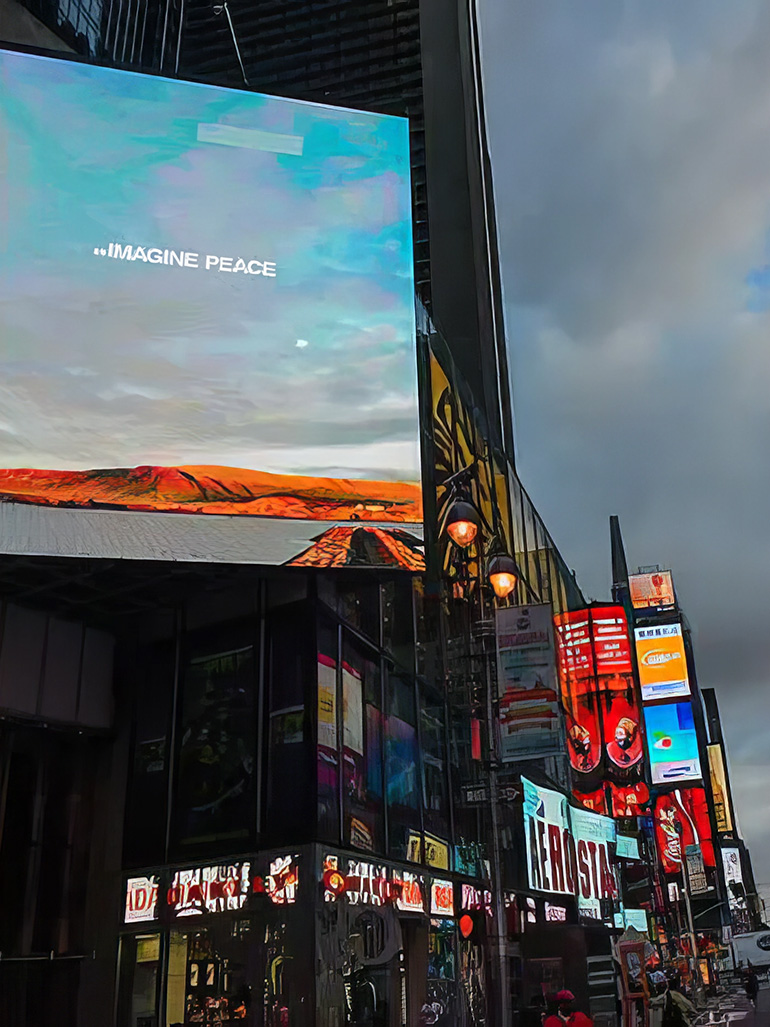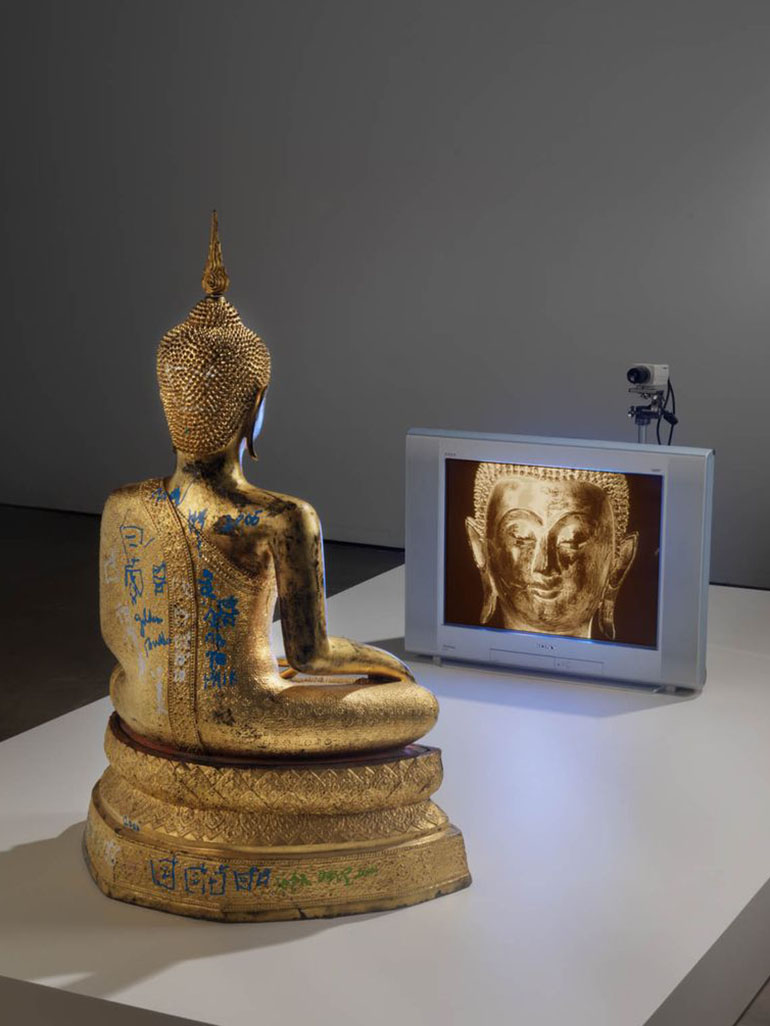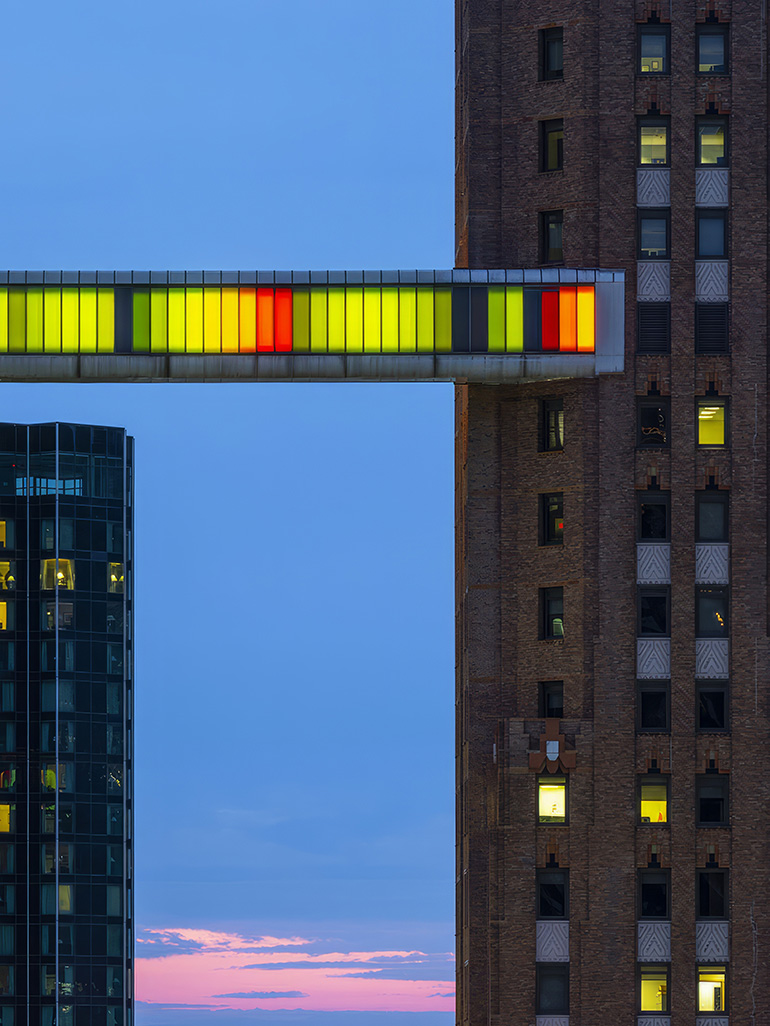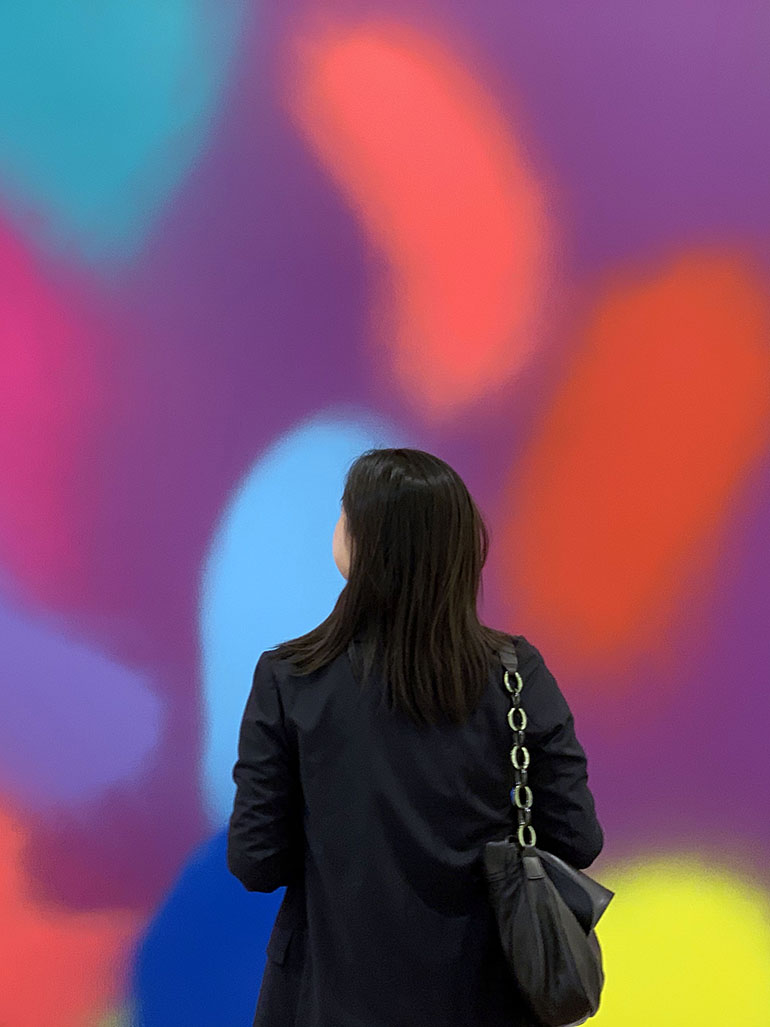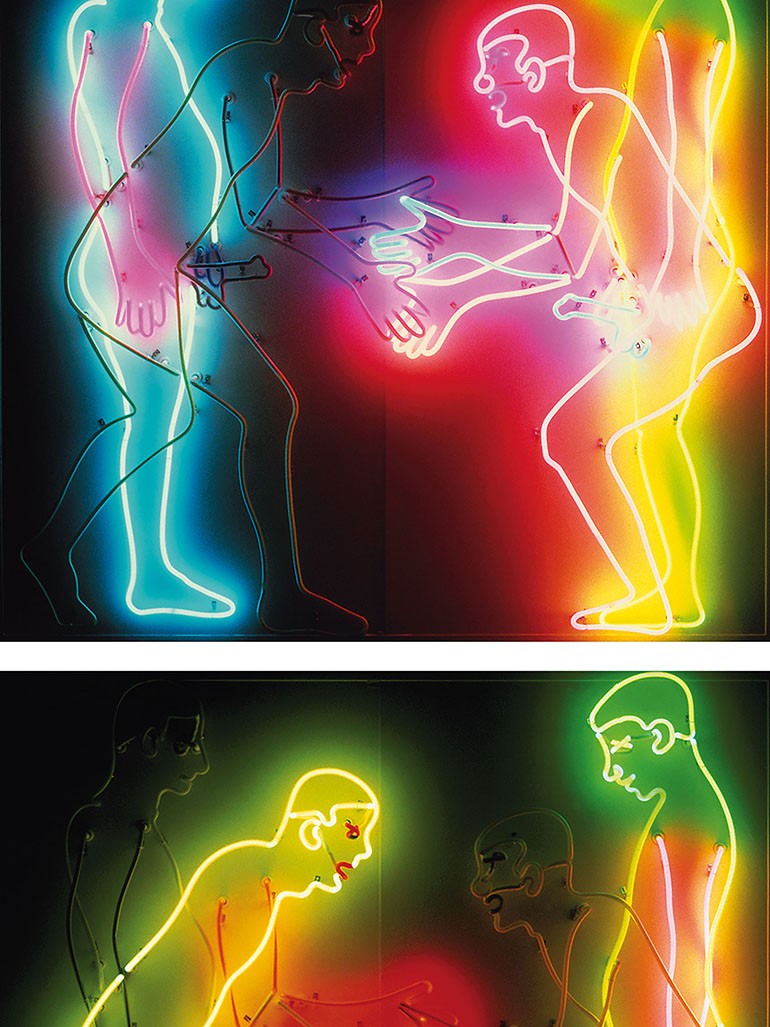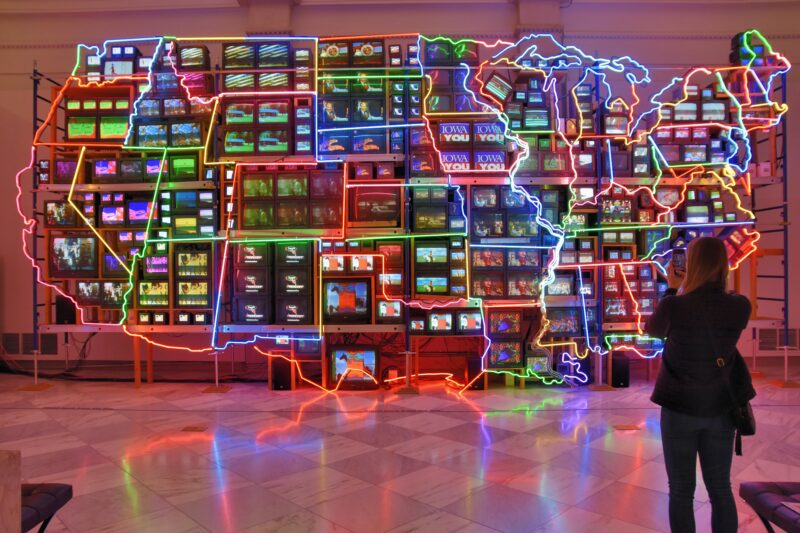
Smithsonian American Art Museum, F St NW &, 8th St NW, Washington, DC 20004 Copy to clipboard
38.897896, -77.02314 Copy to clipboard
Before you go
Nearby attractions: Explore the National Portrait Gallery, also located in the same building, or visit other nearby landmarks like the National Mall and Chinatown.
Peak hours: Afternoons and weekends can be busy. Plan your visit during weekday mornings for a quieter experience.
Photography: Photography is allowed, but flash and tripods are prohibited to preserve the artwork.
Recommended attire: Dress comfortably, as you may spend time exploring the museum and nearby attractions.
Traffic: The Penn Quarter area can experience heavy traffic, especially during rush hours and events.
Best visit time
The best time to visit is weekday mornings, as the museum is quieter and less crowded.
Directions
Gallery Place-Chinatown Station
Lines: Green, Yellow, Red Metro Lines
By foot: Exit the station onto F Street NW, and the museum is a 2-minute walk west on F Street.
Walking distance: 0.1 miles
Judiciary Square Station
Lines: Red Metro Line
By foot: Exit the station onto F Street NW, head east, and walk 7 minutes to the museum entrance.
Walking distance: 0.3 miles
Parking
Numerous parking garages are available in close proximity. Public transportation or rideshare services are recommended due to limited street parking.
Union Station
Lines: Amtrak, MARC, and Red Metro Line
By foot: From Union Station, take the Red Line to Judiciary Square Station or Gallery Place-Chinatown Station. Then follow the walking directions.
Walking distance: 1 mile
What is Nam June Paik’s Electronic Superhighway?
Electronic Superhighway is one of the most noted works of Korean 1 Nam June Paik 2 artist. It illustrates how he interpreted a diverse nation through media technology. The Electronic Superhighway is a large installation, constructed with 336 televisions, 50 VHS players, 3750 feet of cable, and 575 feet of multicolored neon 3 tubing.
The impact on visitors
Electronic Superhighway creates an overwhelming impact on visitors when they first see it. The wave of audio and visual media, along with flashing neon lights, make it awe-inspiring. It becomes challenging to concentrate on any state that the neon lights border or the video dialogues that play for each state.
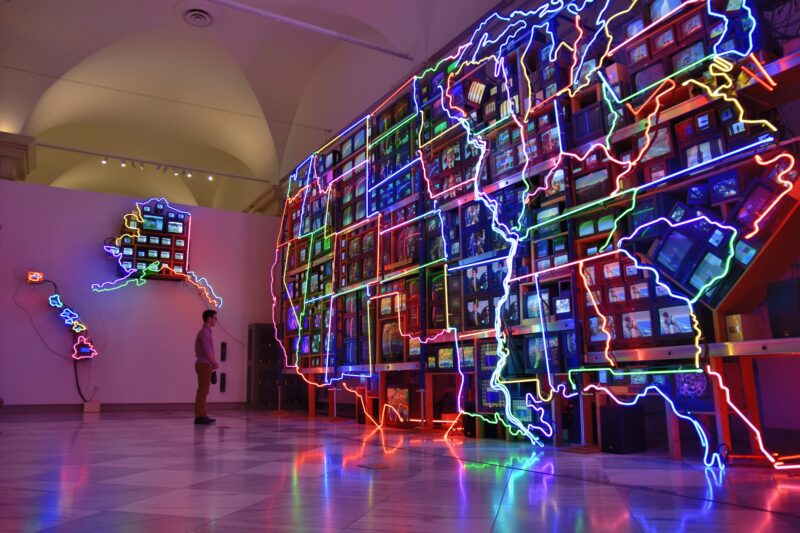
Paik’s idea of the US states
Through this huge techno-sculpture, Paik not only articulated how he saw a diverse and multi-cultural country like the USA but also our future. Each state is represented through a video clip that conveys his understanding of it. Paik shows how our concept of the different states has been formed by film and television.
While some states are represented by popular TV series or books, he uses his personal connections to depict some states. These scenes and more were picked by Nam June Paik and show the US through his lens.
| State | Representation | Details |
|---|---|---|
| Alabama | Civil Rights Movement | Black-and-white TV footage and Martin Luther King Jr.'s speeches document Civil Rights struggles |
| Alaska | Ice and Snow | Imagery of Alaska's rugged natural beauty emphasizes its cold climate and isolation |
| Arizona | Highways | Expansive highway footage reflects the iconic road networks of the Southwest |
| Arkansas | Charlotte Moorman (performance artist) | Features videos of performance artist Charlotte Moorman, Paik's collaborator |
| California | Golden Gate Bridge, Digital Revolution, O.J. Simpson | Fast-moving montage with zeros and ones, Golden Gate Bridge, and an O.J. Simpson-led exercise class |
| Colorado | Amateur Sports | Footage highlights outdoor sports culture and the state's natural athleticism |
| Florida | Tucked Neon Outline | Part of Florida's neon outline is folded under due to studio height constraints |
| Georgia | 1996 Summer Olympics | Clips of the Atlanta Olympics capture a moment of global attention on Georgia |
| Hawaii | South Pacific | Scenes evoke Hawaii’s tropical landscapes, culture, and cinematic portrayal |
| Idaho | Potatoes | A camera pans across a giant pile of potatoes, reflecting limited knowledge of the state |
| Illinois | Chicago and Lincoln | Rapid scenes of Chicago's urban life interspersed with images of Abraham Lincoln |
| Indiana | Indy 500 | Highlights the excitement and speed of the famous car race |
| Iowa | Political Campaigns | Montage of presidential candidates like JFK, Nixon, and Carter reflects Iowa's primary significance |
| Kansas | The Wizard of Oz | Clips from the iconic film emphasize themes of fantasy and the Midwest |
| Kentucky | Kentucky Derby | Images of horse racing celebrate the state’s cultural and sporting traditions |
| Massachusetts | John Cage (composer) | Paik’s friend John Cage symbolizes avant-garde artistry and innovation |
| Mississippi | Showboat | Clips from the musical evoke riverboat culture and Southern traditions |
| Missouri | Meet Me in St. Louis | Scenes from the musical highlight St. Louis’ cultural history |
| Oklahoma | Oklahoma! Musical | Clips from the musical showcase the state's cultural identity |
| Rhode Island | Tiny Television | A single small TV symbolizes the state’s small size and individuality |
| South Dakota | George McGovern (politician) | Features the prominent politician, emphasizing personal over monumental symbols like Mount Rushmore |
| Texas | Cowgirls, Cactus, Branch Davidian Siege | Collage includes cowboy culture, cactus, and the 1993 Waco fires |
| Washington | Merce Cunningham (dancer & choreographer) | Pays tribute to the choreographer’s contributions to modern dance |
| Washington, D.C. | Mini-Cam Viewer Feedback | Visitors’ faces are captured live and displayed on a tiny screen |
Paik’s vision for the future
Paik named this video installation Electronic Superhighway to express his vision for the future. He envisioned that in the future, communication would be boundaryless due to advanced technology. It would be pertinent to mention that what Paik envisaged has now been manifested through the internet. In fact, the term is universally used today.
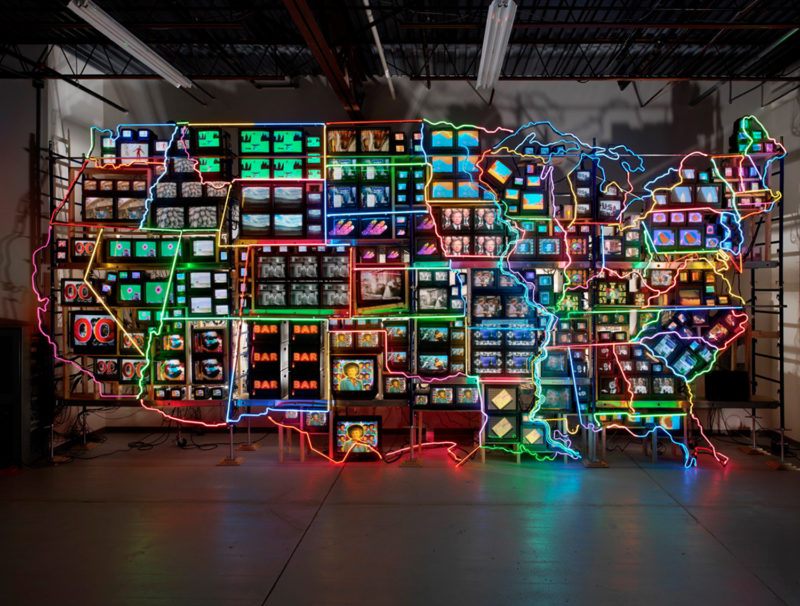
Inspired by the American highway system
On another level, America’s highway system, which connects the nation, inspired Paik to create the Electronic Superhighway. The video clips run very fast to imitate how one sees the country through a moving car.
Conclusion
The Electronic Superhighway continues to amaze people due to its sheer size and various interpretations. It draws our attention to how our world is defined by technology and also the problems it creates, like stereotyping our ideas or information overload. In a nutshell, through this video art, Paik has successfully represented our time.
Video: Nam June Paik’s Art & Revolution
48 min 10 sec
More by Nam June Paik More neon artworks
Explore nearby
Smithsonian American Art Museum, Washington, DC
 Ivanka Trump vacuumingPerformance ended (staged in 2019)0 km away
Ivanka Trump vacuumingPerformance ended (staged in 2019)0 km away Jeanne Gang's HiveExhibition ended (dismantled in 2017)0 km away
Jeanne Gang's HiveExhibition ended (dismantled in 2017)0 km away Snarkitecture's beach in a museumExhibition ended (dismantled in 2015)0 km away
Snarkitecture's beach in a museumExhibition ended (dismantled in 2015)0 km away Fernand Léger's The city painting198 km away
Fernand Léger's The city painting198 km away Cai Guo-Qiang's blossoms explosionPerformance ended (staged in 2009)198 km away
Cai Guo-Qiang's blossoms explosionPerformance ended (staged in 2009)198 km away



